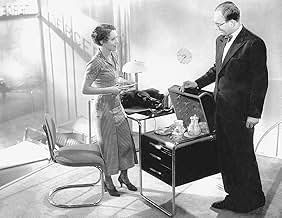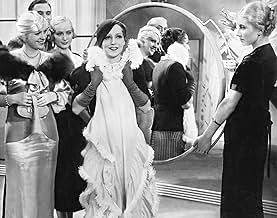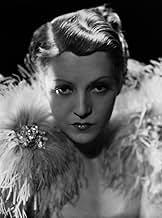Ajouter une intrigue dans votre langueA young woman working as a secretary for a Berlin car business tries to impress a rich Australian visitor by pretending she is a foreign countess.A young woman working as a secretary for a Berlin car business tries to impress a rich Australian visitor by pretending she is a foreign countess.A young woman working as a secretary for a Berlin car business tries to impress a rich Australian visitor by pretending she is a foreign countess.
Elfriede Sandner
- Franzi, Studentin
- (as Friedel Sandner)
Histoire
Le saviez-vous
- ConnexionsAlternate-language version of Un jour viendra (1934)
Commentaire à la une
It's hard to rate this German modern fairy tale operetta movie from 1934. Although it was a thriving genre, there isn't much available these days to compare it to from Germany. Standard film history would have us believe that German film, once Lubitsch left, is all about fascism. It's pre-fascist or proto-fascist or occasionally anti-fascist, whereupon yet another film maker had to leave the country in a hurry.
I suspect that the folks at UFA were more interested in box office returns and the foreign markets than pushing Fascism. Ideology was something you had to put up with to get past the censor. If this movie tries to tap the zeitgeist a little ham-handedly by having Gustav Waldau drop his hobby of collecting Roman coins and take up collecting tractors, it looks bizarre, but all it proves is that the people at UFA were reading the newspapers and maybe the censor had some issues.
Once we've stripped away the flash-card film course issues, a look at this picture shows something that looks a great deal like a Paramount musical from the same era: clothing, lighting, camera movement (there's one lovely dance number for Käthe von Nagy in which she moves all around the small set and the camera moves with her to capture the number in a single shot) and the variety of wipes looks a lot like UFA's American affiliate. The set design is more impressionistic, but except for that, the fact that everyone speaks German and that the sense of humor is more mechanical -- lots of puns -- it's all of a muchness.
The music seems to start from Lehar and occasionally sounds like it's been orchestrated for the Paramount house orchestra of the period. The songs are competent and there is one lovely ballad, "Him and Her".
Other than that, the plot, about how Fraulein Nagy accidentally falls into pretending to be a countess and into love with Wolf Albach-Retty, is pretty much a standard fairy tale plot of the period. It also points the way towards the American screwball comedies as counts who have to work for a living get engaged to the the daughter of a Cotton King or a secretary in a Daimler-Benz showroom or, as mentioned above, give up antique Roman coins for a herd of tractors. Class has ceased to matter. All that matters is love.
This one could have used sharper jokes, though.
I suspect that the folks at UFA were more interested in box office returns and the foreign markets than pushing Fascism. Ideology was something you had to put up with to get past the censor. If this movie tries to tap the zeitgeist a little ham-handedly by having Gustav Waldau drop his hobby of collecting Roman coins and take up collecting tractors, it looks bizarre, but all it proves is that the people at UFA were reading the newspapers and maybe the censor had some issues.
Once we've stripped away the flash-card film course issues, a look at this picture shows something that looks a great deal like a Paramount musical from the same era: clothing, lighting, camera movement (there's one lovely dance number for Käthe von Nagy in which she moves all around the small set and the camera moves with her to capture the number in a single shot) and the variety of wipes looks a lot like UFA's American affiliate. The set design is more impressionistic, but except for that, the fact that everyone speaks German and that the sense of humor is more mechanical -- lots of puns -- it's all of a muchness.
The music seems to start from Lehar and occasionally sounds like it's been orchestrated for the Paramount house orchestra of the period. The songs are competent and there is one lovely ballad, "Him and Her".
Other than that, the plot, about how Fraulein Nagy accidentally falls into pretending to be a countess and into love with Wolf Albach-Retty, is pretty much a standard fairy tale plot of the period. It also points the way towards the American screwball comedies as counts who have to work for a living get engaged to the the daughter of a Cotton King or a secretary in a Daimler-Benz showroom or, as mentioned above, give up antique Roman coins for a herd of tractors. Class has ceased to matter. All that matters is love.
This one could have used sharper jokes, though.
Meilleurs choix
Connectez-vous pour évaluer et suivre la liste de favoris afin de recevoir des recommandations personnalisées
Détails
- Durée1 heure 30 minutes
- Couleur
- Rapport de forme
- 1.33 : 1
Contribuer à cette page
Suggérer une modification ou ajouter du contenu manquant

Lacune principale
By what name was Einmal eine große Dame sein (1934) officially released in Canada in English?
Répondre



















